

| 
|
The Moon is eclipsed when it moves into Earth's shadow. Below are several images of lunar eclipses over the years. The ruddy colors are caused by light grazing the earth's atmosphere, just as in sunsets.
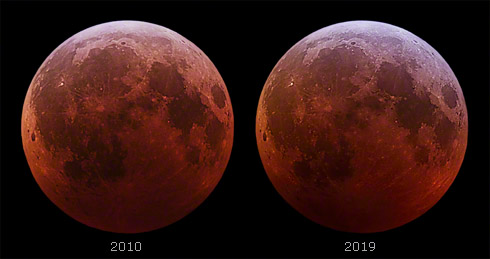
3-D Moon
The lunar eclipses of 2010-12-21 (on the left) and 2019-01-21 (on the right -- both also shown larger below) were fairly similar. During both, the Moon passed near the northern edge of Earth's shadow at mid-eclipse. Due to differences in the Moon's libration, the Moon's face was tilted to slightly different orientations during each eclipse. The tilt provided just enough of a difference in the views to produce a natural stereo pair.
To see the Moon in 3-D, sit about a foot from your monitor and look into the distance between the two images of the Moon. When your eyes shift to the alignment normally used for viewing objects at a distance, the two images will fuse to form a third and you will see the Moon as the 3-D sphere it really is. (If you have a pair of red/blue glasses, the anaglyphic versions might be easier to view.) ©2019
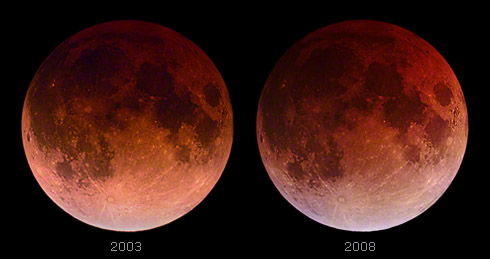
3-D Moon
The lunar eclipses of 2003-11-08 (on the left) and 2008-02-20 (on the right -- both also shown below) were also fairly similar. During both, the Moon passed near the southern edge of Earth's shadow at mid-eclipse and formed a natural stereo pair. (The resulting stereogram appeared on p. 68 of the November 2013 issue of Popular Science magazine.) ©2008
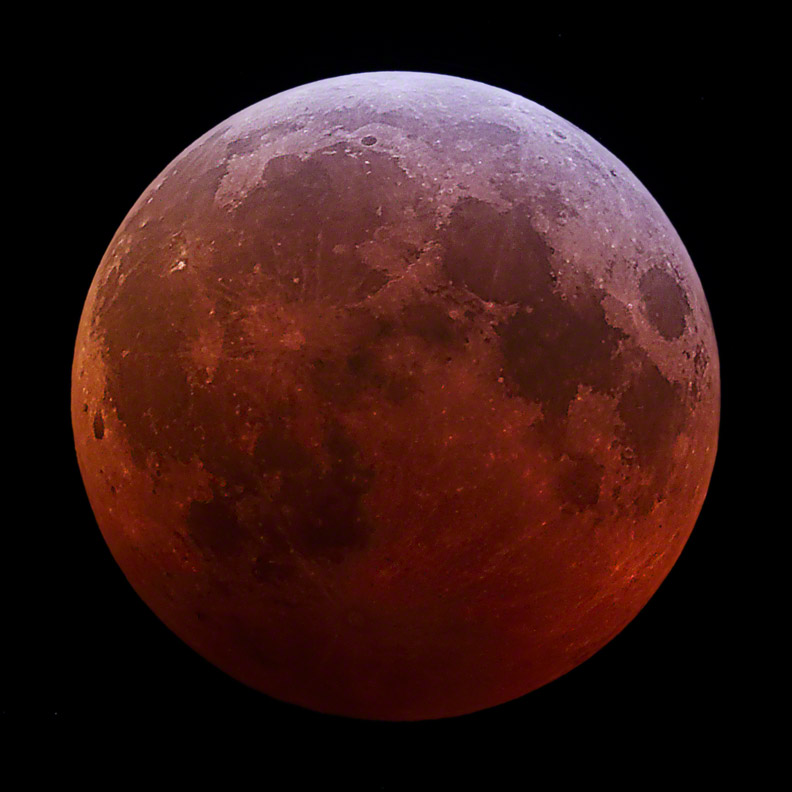
Mid-eclipse on January 21, 2019. Photos from this eclipse were combined with photos from the 2003 eclipse to produce images of Earth's shadow.
1 second at ASA 800 through an Astro-Physics 155mm (6 inch) refractor at f7.1 using a Canon 5DIII from northern New Jersey at 2019-01-21 12:13 a.m. EST. North is up. ©2019
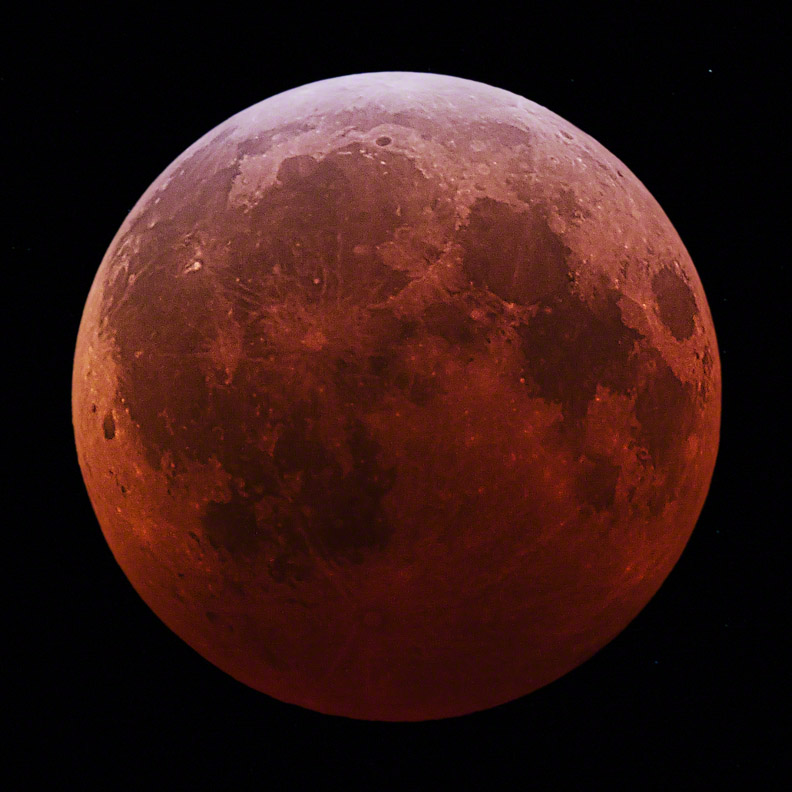
Mid-eclipse on December 21, 2010.
1 second at ASA 800 through an Astro-Physics 155mm (6 inch) refractor at f7.1 using a Canon 40D from northern New Jersey at 2010-12-21 03:20 a.m. EST. North is up. ©2010
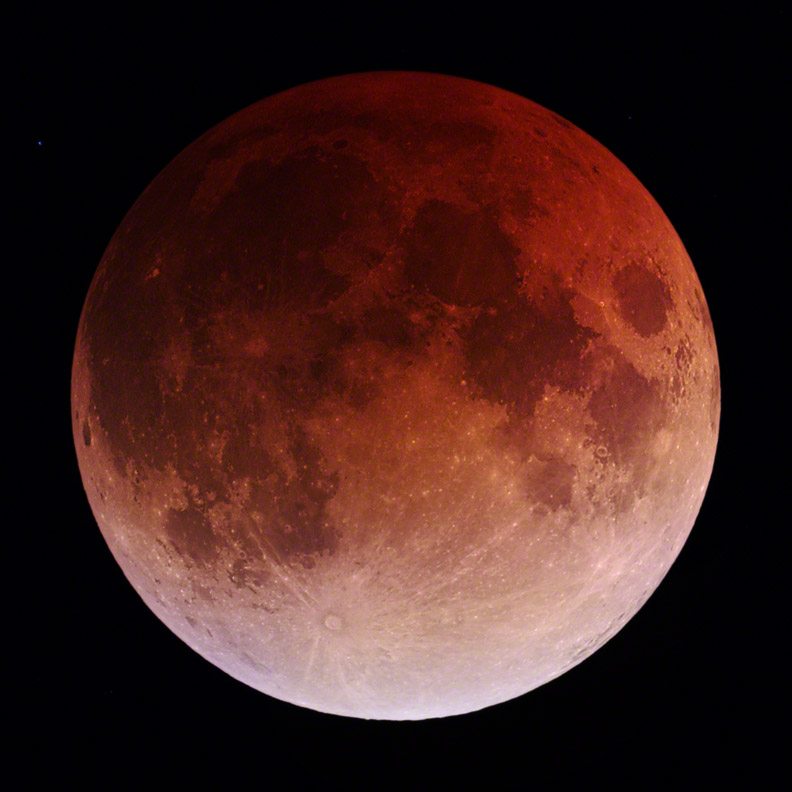
Mid-eclipse on February 20, 2008.
1 second at ASA 800 through an Astro-Physics 155mm (6 inch) refractor at f7.1 using a Canon 40D from northern New Jersey at 2008-02-20 at 10:24 p.m. EST. North is up. ©2008

During the partial phases of a lunar eclipse, part of the Moon is inside the darkest portion of Earth's shadow (the Umbra) and part is outside it. The part in the Umbra is about 1000 times dimmer than the part outside it. While our eyes can deal with that kind of brightness range, computer monitors and prints can't display it. In order to produce an image that approximates what the eye sees, I combined eight exposures ranging from 1/2 second to 1/320 second. The eight images were taken over the course of a few seconds at 11:11 p.m. EST while the Moon was emerging from Earth's shadow.
Partial phase: 2008-02-20 11:11 p.m. EST from northern New Jersey. Composite of 1/320, 1/250, 1/125, 1/60, 1/30, 1/15, 1/8, and 1/2 second exposures at 800 ASA with Canon 40D through Astro-Physics 155 at f7.1. ©2008
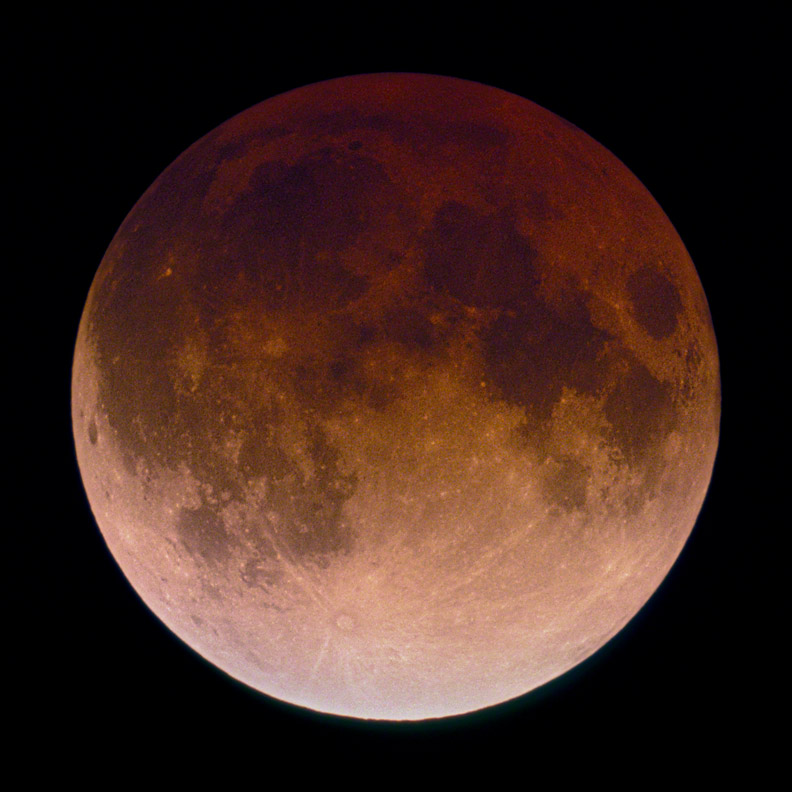
Mid-eclipse on November 8, 2003. The Moon never got very deep into the shadow, as can be seen in the photo of the shadow itself.
A stack of two 3-second exposures on Fuji Provia 400 color slide film through an Astro-Physics 155mm (6 inch) refractor at f7.1 from northern New Jersey at 2003-11-08 08:20 p.m. EST from northern New Jersey. ©2003
| |||||||||||||||||
|
Astrophotography Books – Astronomy Books |








